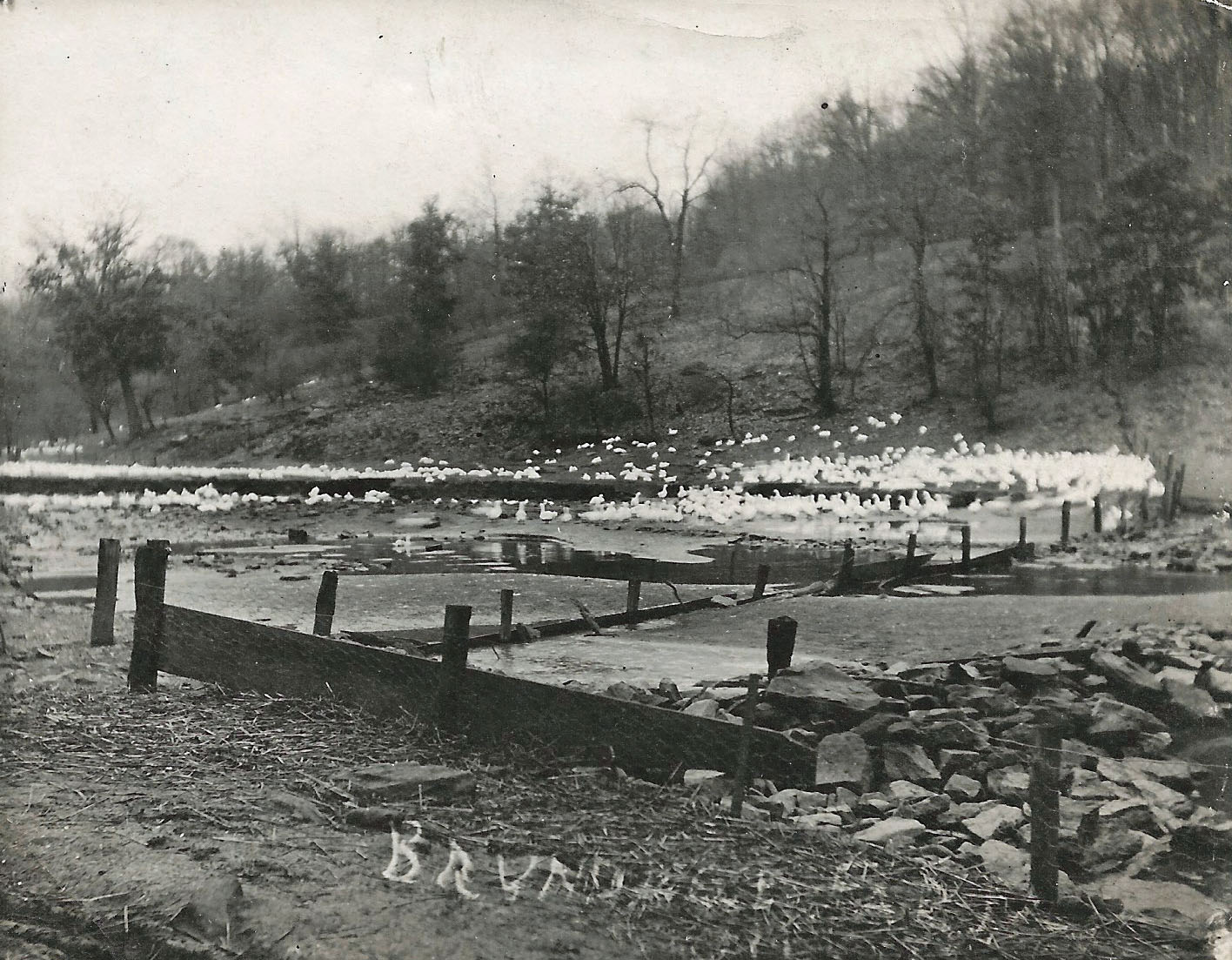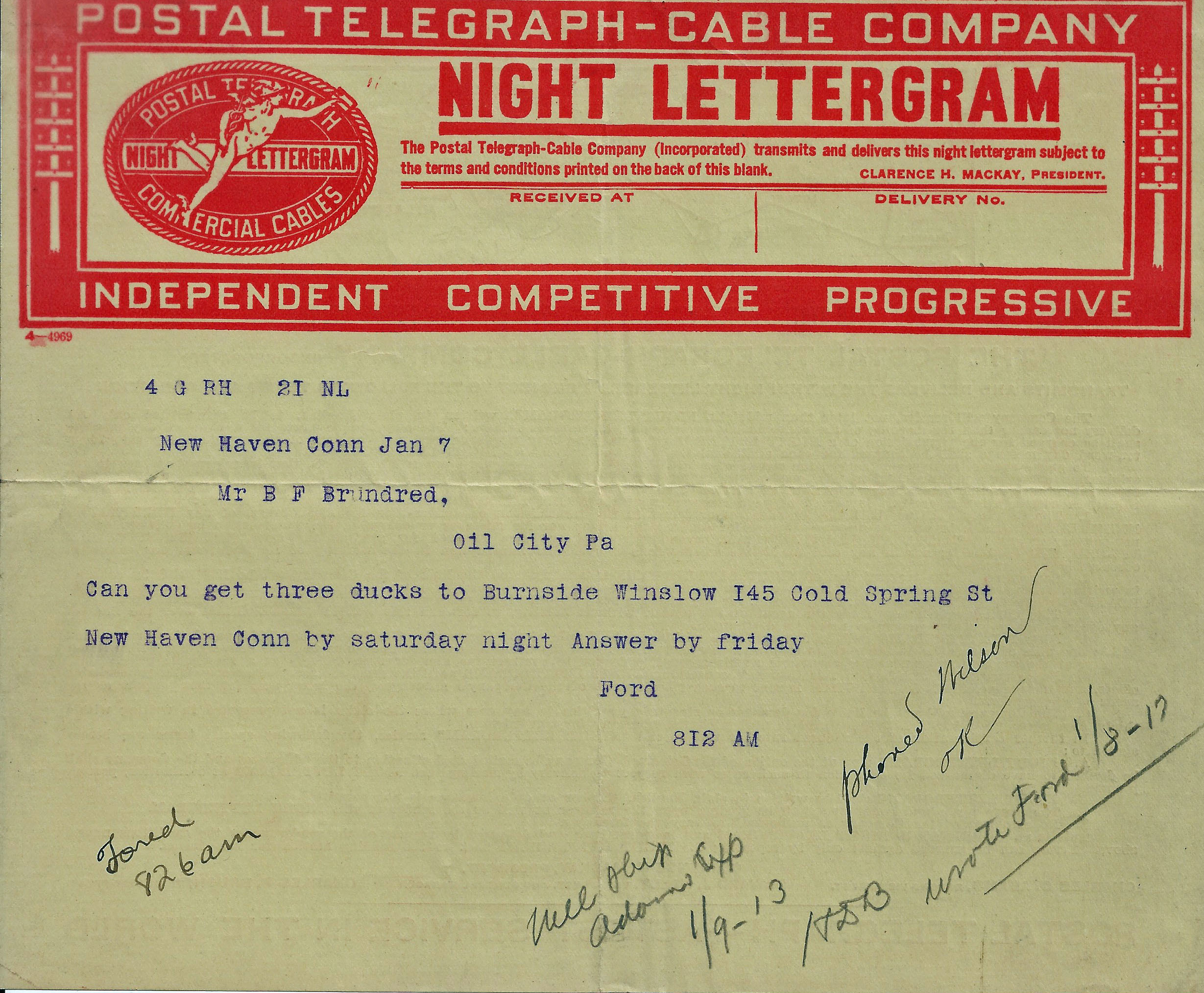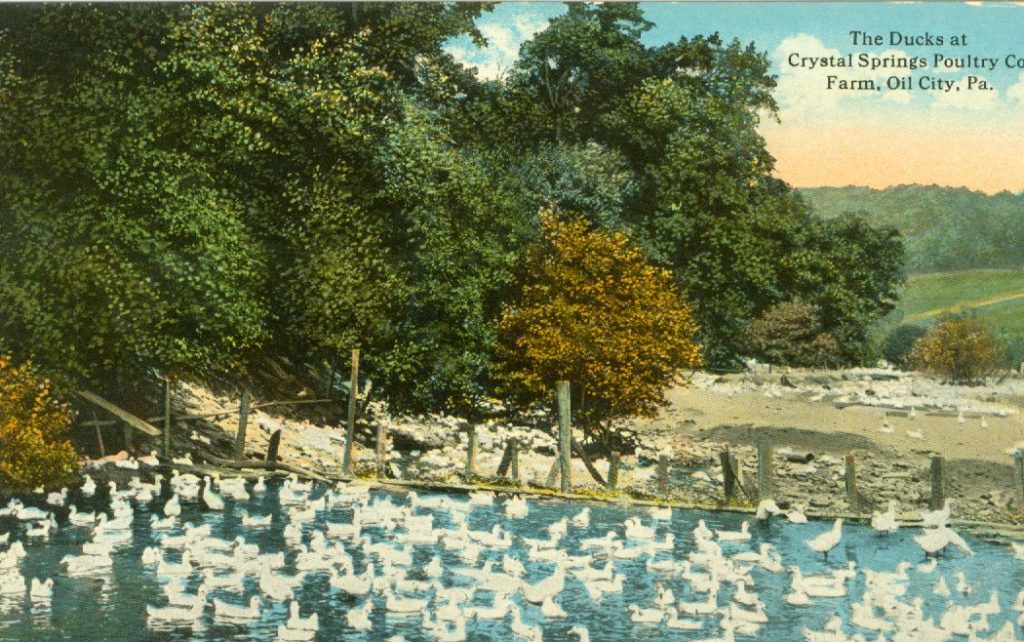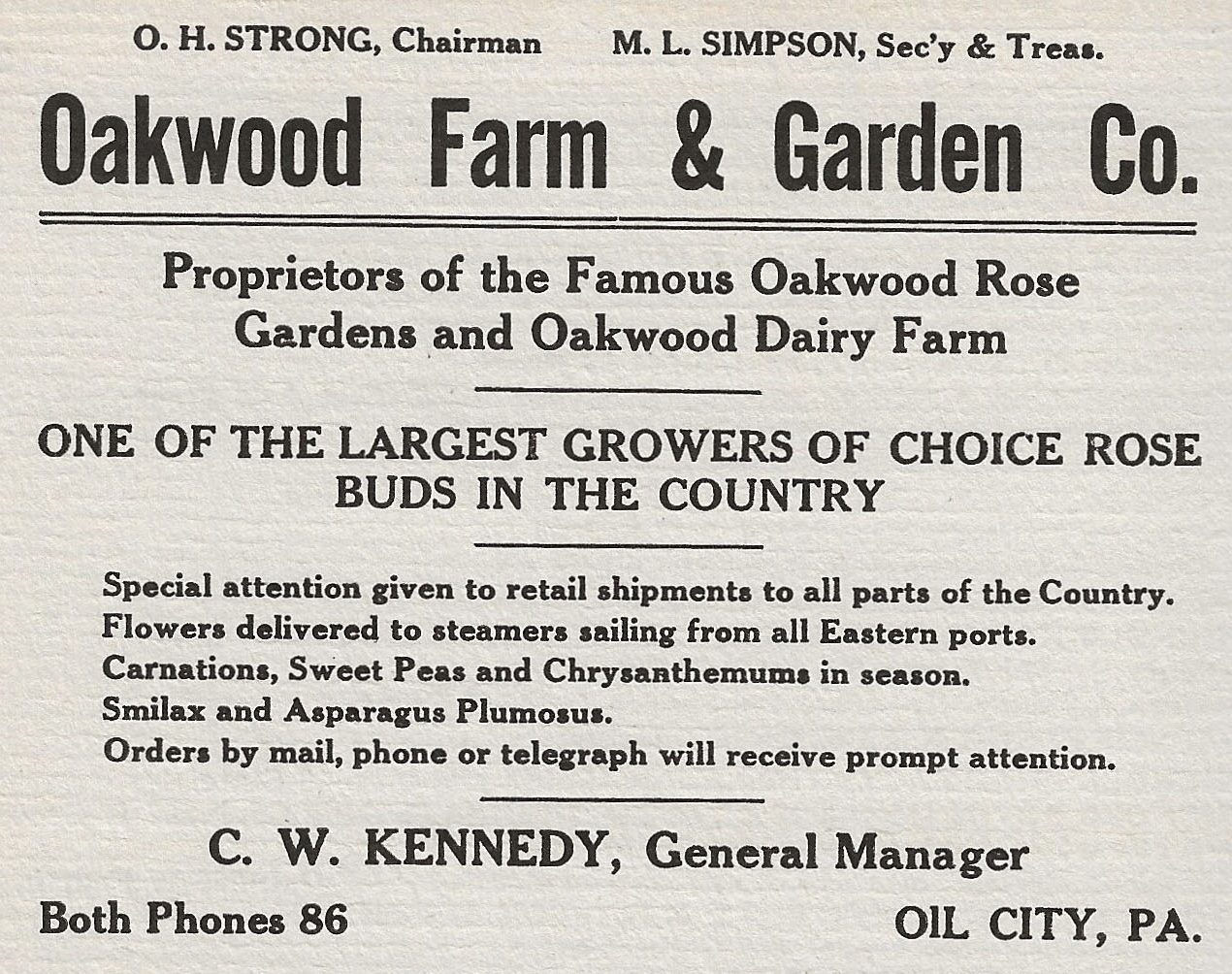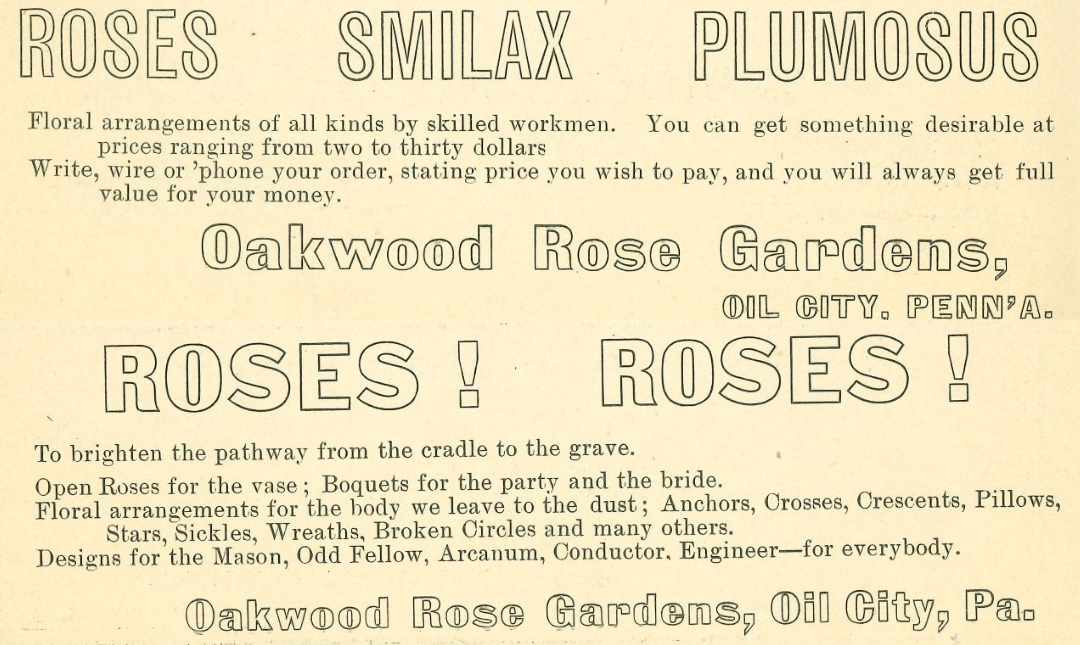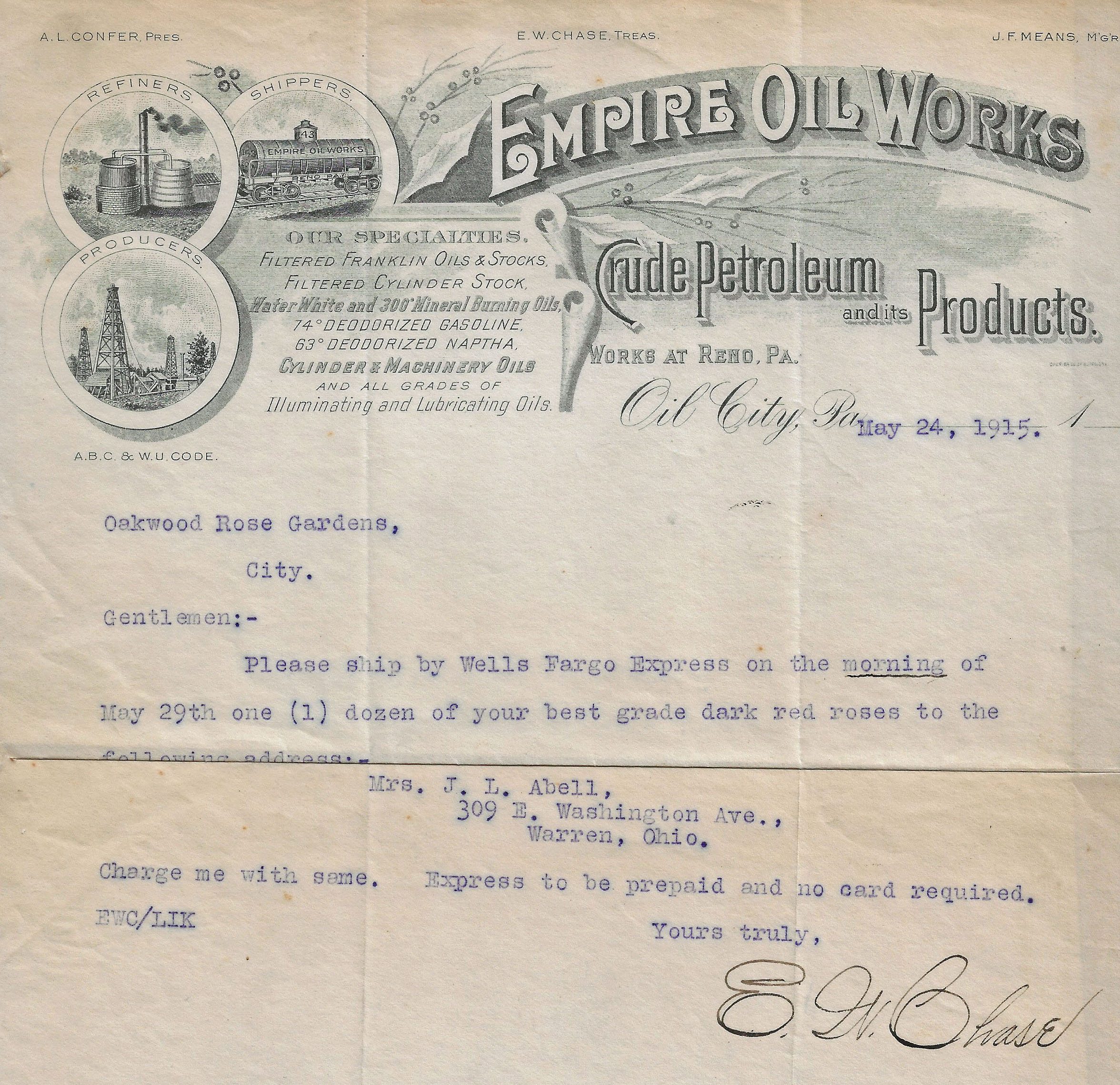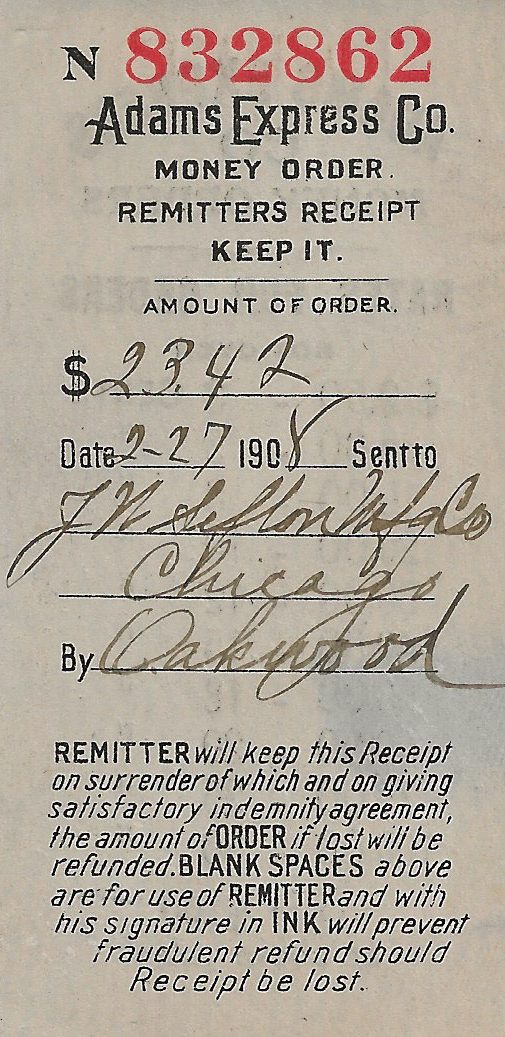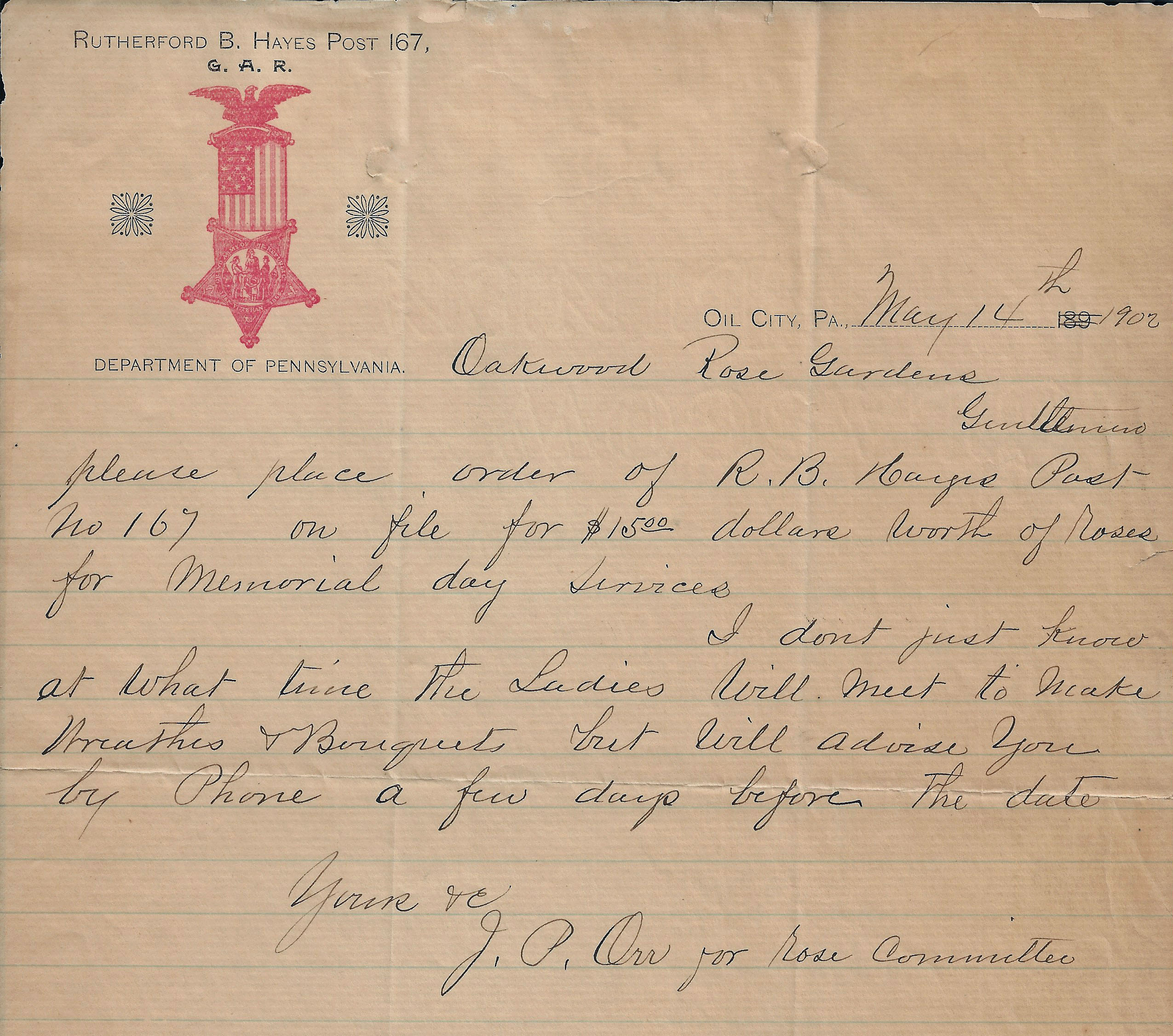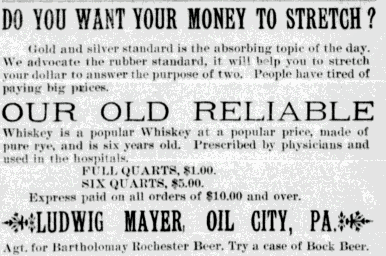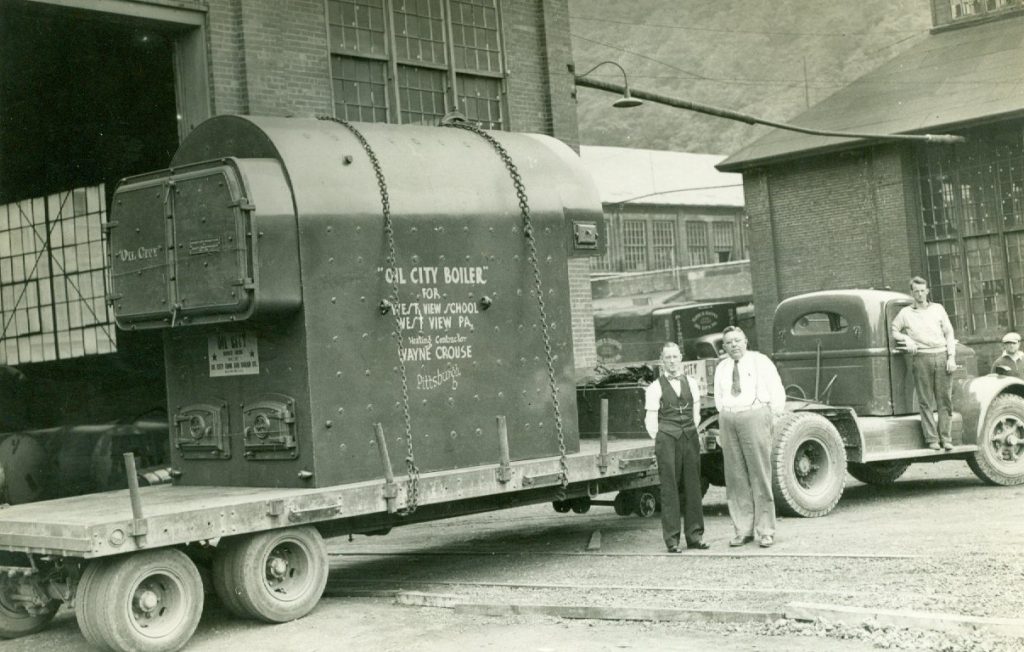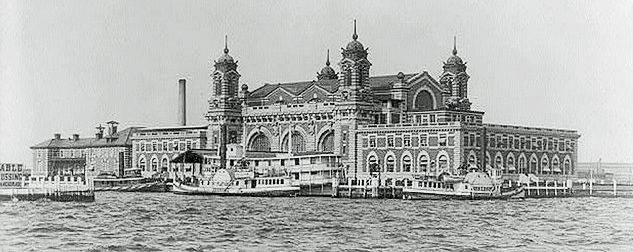Ducks and Roses
- Judy Etzel
- February 4, 2022
- Hidden Heritage
- 4088
The Oil City area claimed honors as a major manufacturing center as it produced pumps, engines, drilling rigs, pipelines and all manner of tools and machines needed for the oil and gas industry. The goods were sold around the globe and offered fame and fortune to the community.
There were, though, other claims to fame and they had nothing to do with the mainstream industries. Among the most unusual enterprises focused on ducks and rosebuds.
Both businesses were within shouting distance of each other on Riverside Drive and both were launched by Oil City men who had made their fortunes in the early oil and gas business.
Crystal Springs Poultry Farm
B.F. Brundred, president of the Imperial Refinery at Siverly and owner of his own Brundred Oil Company, lived on West First Street in Oil City and summered at Rockmere along the river. He was drawn to a sprawling property along Riverside Drive and figured he could start a hobby as a duck-raising entrepreneur there.
He began the business with rabbits and cows in 1899 but within three years turned his attention to raising ducks. Brundred and his crew chose to raise and distribute Royal White Pekin ducks under the brand name of “Famous Oil City Ducklings.”
Each duck, when marketed and shipped out, was adorned with a white celluloid collar around its neck with the words “Famous Oil City Duckling” printed on it, according to a newspaper advertisement.
By 1917, Crystal Springs was annually shipping out more than 85,000 birds, all packed in ice in barrels, to hotels and restaurants across the country. Tons of ice were harvested from the ponds on the farm, cut into squares and moved into ice houses where they were layered with sawdust.
The filled wooden barrels were then loaded onto horse-drawn wagons and hauled to the railroad freight station in Oil City.
A key customer was New York City’s famed Waldorf-Astoria Hotel that boasted it had the Famous Oil City Duckling on its menus.
The ducks were ready for market when they were 10 weeks old and at an average of six pounds in weight. “During the packing season, the daily killing of ducks for shipment was so great that Sage Run is said to have run red with blood clear to the river,” reported the local newspaper.
The duck farm soon boasted homes, brooder houses, barns, ice houses, feed barns, dairy barns, silos, sheds, garages and more. About 50 employees lived in houses on the farm property. Family members, too, including H. Douglas Brown Jr., Brundred’s grandson, worked summers on the farm.
Duck raising was an expensive proposition. A 1964 Derrick newspaper story noted that in 1916, more than three million pounds of feed was consumed by the ducks. While some feed was grown on the farm, the business required about 65 rail carloads of additional feed.
There was chicanery, too. The family reported about 2,000 to 3,000 ducks were stolen each year, most of them “men on horseback.” In addition, other poultry concerns tried to mimic the Famous Oil City Ducklings and peddled inferior ducks.
The business also included chicken-raising, eggs and dairy products. The chickens and eggs typically were sold to the hotels who had longstanding ties to the duck product. Also on tap for purchase were duck feathers. There was a picking house on the farm and the plucked feathers were laid out to dry. They were sold for pillow stuffing.
The duck farm, one of the largest enterprises of its kind in the country, was a tourist attraction. Those passing by the farm spoke of the fields covered with ducks, the scene reminding them of a “summer snowstorm.”
By the end of World War I, high feed prices and a decline in demand brought the end to the highly successful duck business. The farm remained a chicken-raising and limited dairy production site. In the late 1920s, grocer Oscar Bodamer Sr., who later became a Venango County commissioner, bought the property and raised chickens.
Oakwood Rose Gardens
O.H. Strong, an oil and gas producer, also fancied himself as a successful gardener – especially when it came to flowers. In 1886, the Oil City resident built a handful of greenhouses on farmland he owned just outside the city limits in Cranberry Township. A year later, he incorporated it as the Oakwood Farm and Garden Company.
According to the Venango County 2000 volume published by the Venango County Historical Society, “Mr. Strong had studied rose culture in an amateur way for a number of years and … decided to embark on the growing and propagating of roses as a business.”
Within two years, nine large greenhouses had been constructed on the farm site. A dairy herd was soon added and milk was delivered by horse and wagon to a wide spectrum of customers. Houses and a large barn were constructed on the property.
While Oakwood also offered other plants, including vegetables and ferns, for sale, it was the flower business that charted its success. It became famous for its national shipments of cut roses, all grown at Oakwood.
The roses were described as “choice” in advertisements and they won numerous top awards at flower shows across the U.S. The enterprise billed itself as “the oldest shipper of rosebuds” in the country.
The rose growers promised that they could fill orders “for a dozen roses or several thousand” and send them wherever they needed to go.
There was a succession of owners of the greenhouse operations and the business soon focused more on the local trade because of increasing costs. Bouquets and corsages and flower arrangements were popular purchases for local residents.
The greenhouse operations closed in 1980. The greenhouses were razed and the property sold.
DID YOU KNOW?
Oil City claimed independent beer brewers and a few distilleries in its early history. One such distiller and bottler was German immigrant Ludwig Mayer, a resident of 411 W. First Street. Mayer advertised his brew as “Old Reliable”, a pure rye whiskey aged six years. He sold it at $1 a quart at two retail spots – 103 Center Street and 102 Sycamore Street. One large newspaper advertisement offered this claim: “Old Reliable – This is the brand that has made itself popular on its merits. Unexcelled for the sick room and par excellence as a social beverage.”
Oil City Boiler Works
An Oil City company, organized in 1881 by Daniel O’Day and Michael Geary, had a national customer list for its customized boilers and engines. The plant opened on North Seneca Street and within a decade boasted up to 2,000 employees.
One buyer for two huge black boilers, structures that stretched from floor to ceiling, was the U.S. Government for its immigrant processing center at Ellis Island which was the main East Coast immigration entry port. Millions of immigrants would pass through Ellis Island and the roster included many headed to find jobs in the bustling Oil Valley. The boilers at Ellis Island are stamped with large letters that spell out “Built by Oil City Boiler Works.”
The plant later became a manufacturing center for Jones & Laughlin Steel, Van Huffel Tub Corp. and then Webco.
Written by Judy Etzel with research by Kay Dawson and design by Natalie Cubbon.
HIDDEN HERITAGE IS SPONSORED BY:
Oil Region Alliance
Belles Lettres Club of Oil City
Gates & Burns Realty
Support This Project
Donations to the library are appreciated to help offset printing costs & make this project possible! Want to become a sponsor? Email us at promotions@oilregionlibraries.org to get started!
Make a Donation

